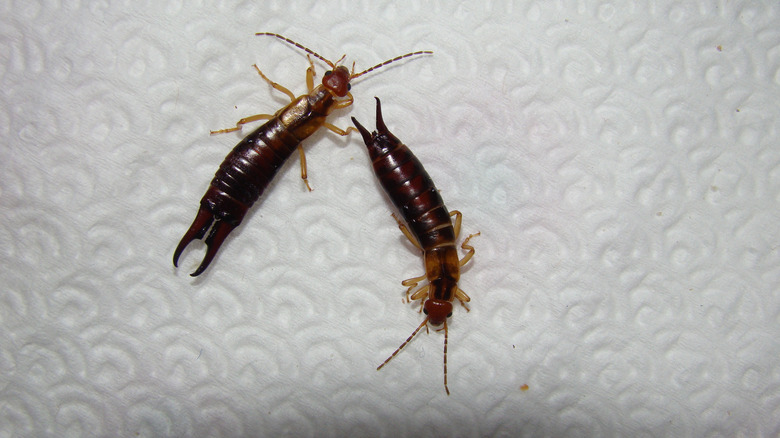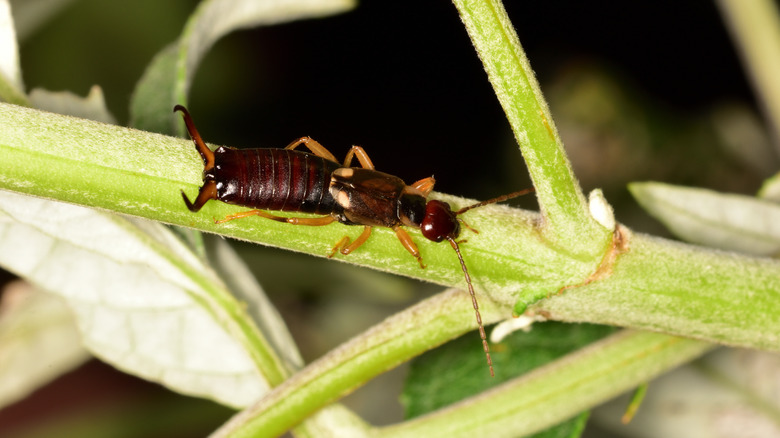You Should Really Think Twice Before Killing That Earwig
Earwigs, although they can look menacing, are generally harmless to humans. In fact, given the benefits they provide, you may want to think twice about killing one. While they have been known to munch on plants, they can serve as advantageous insects in your garden by providing natural pest control. Earwigs prey on other insect eggs and larvae and assist in waste decomposition to enrich the soil. Their scavenging nature helps maintain a balanced ecosystem, promoting plant health and productivity.
Although earwigs can provide a multitude of benefits to your garden, that doesn't mean you want them hanging around your home. To relocate earwigs from specific areas in your home without causing them harm, one option is to use cardboard traps. Take a cardboard tube or a rolled-up newspaper, dampen it, and position it in the affected area. Earwigs, drawn to such moist hiding spots, will congregate inside. When you spot earwigs inside the traps, transport them to a new location where they can be a benefit rather than a bother.
Why earwigs are beneficial
Earwigs excel at pest control, as they scavenge on the eggs and larvae of harmful insects like aphids, mites, and fleas, helping to protect your plants from potential damage. By scavenging on the eggs and larvae of harmful insects, earwigs help mitigate potential plant damage and ensure the health of your garden. Aphids, for instance, cause significant damage to plants by sucking sap and transmitting plant viruses. Earwigs help in controlling their population, thereby preventing these issues.
Additionally, earwigs contribute to breaking down dead plant material, which is beneficial to the environment. This process is crucial for nutrient cycling, ensuring that essential nutrients are returned to the soil for use by plants. In addition to their role in decomposition, earwigs play an important role in the food chain. Beyond munching on plant-destroying insects, these critters go on to provide nourishment for various animals such as birds, amphibians, reptiles, chickens, geese, and ducks.

